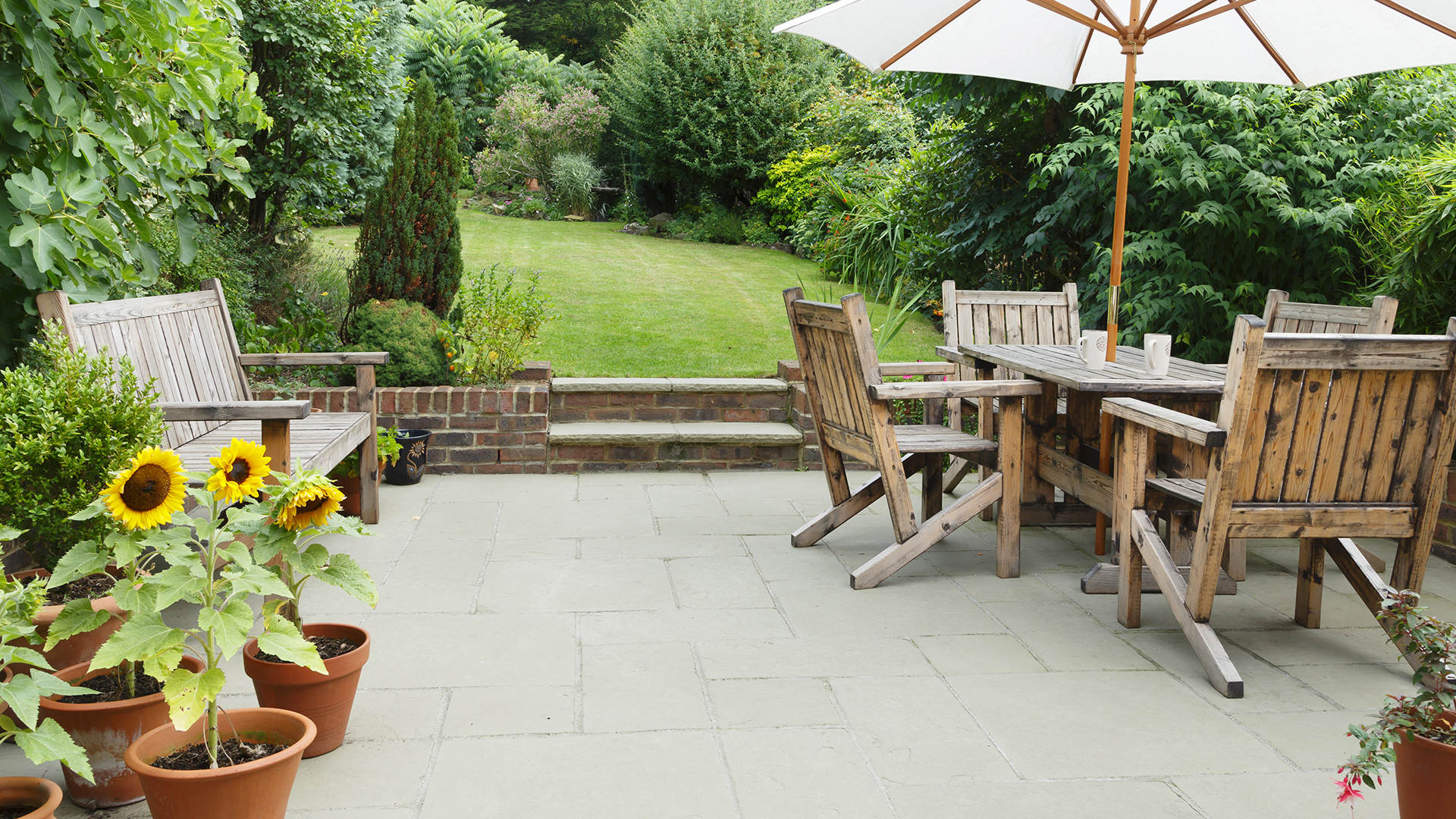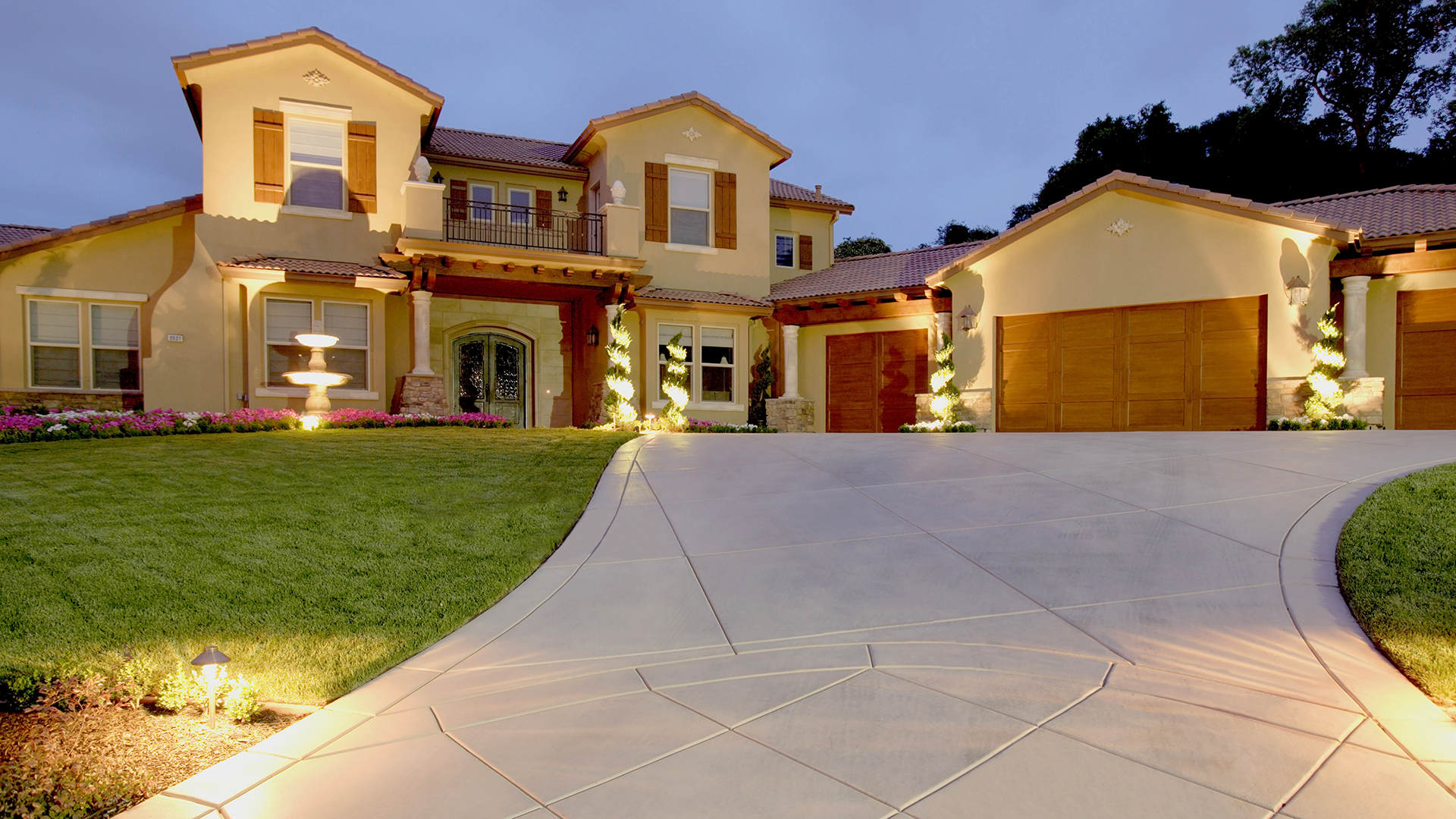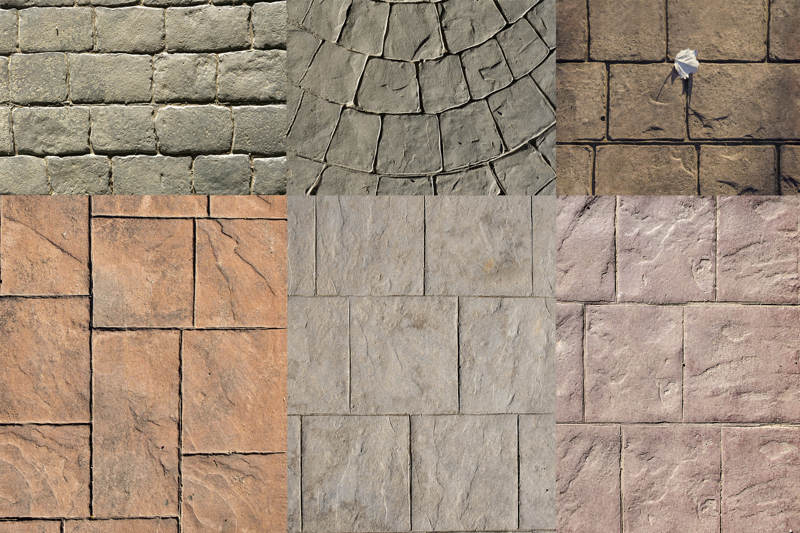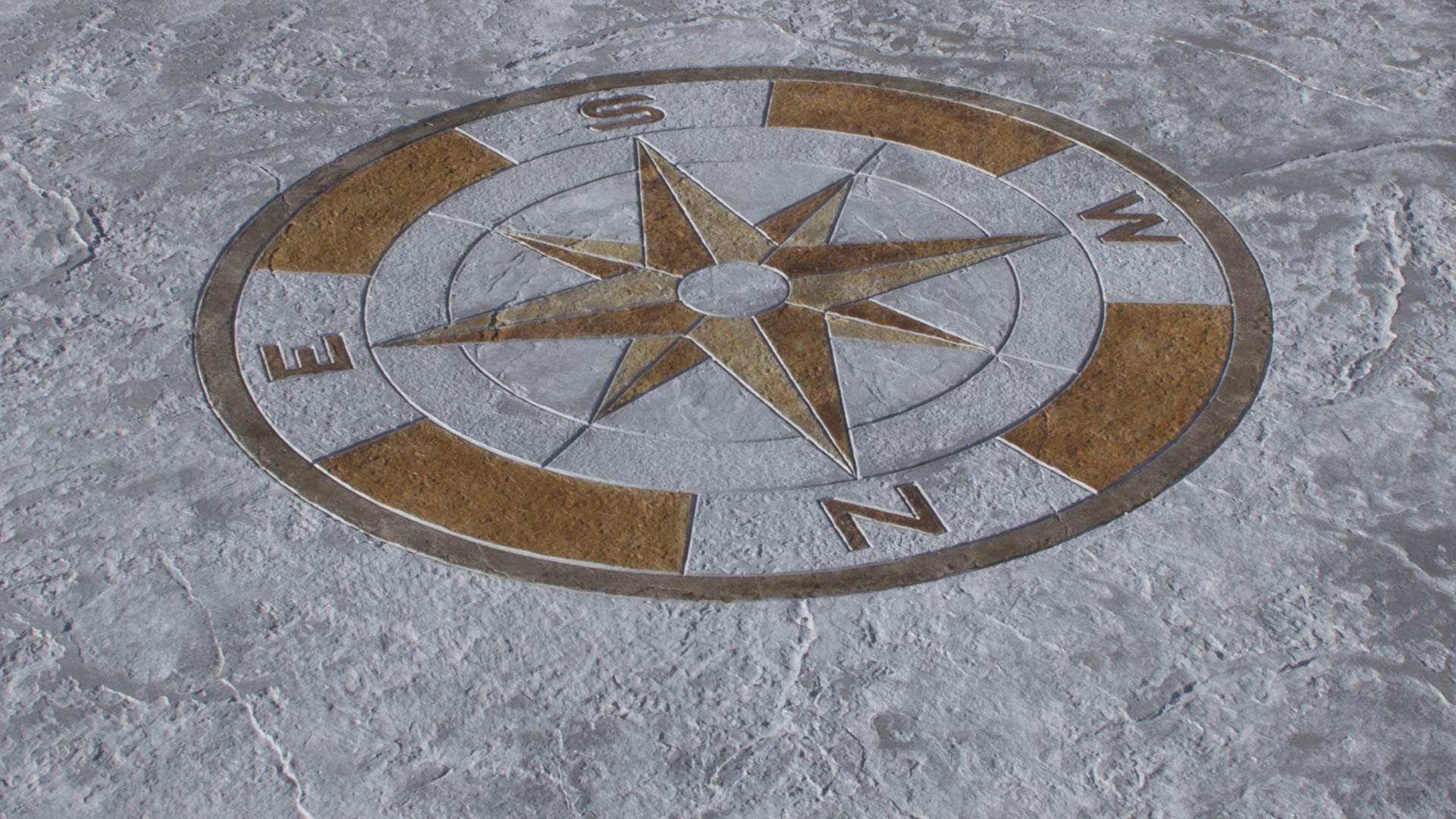Printed concrete price: cost per square meter in 2023
Printed concrete has gained popularity in recent years thanks to the excellent results achieved with its application on exteriors. Its versatility, resistance and capacity to achieve aesthetic finishes make it an ideal construction material for covering both vertical and horizontal surfaces.
Its high performance allows it to pave all types of spaces. It is an ideal complement to give a unique style to terraces, porches, concrete patios or garden floors. It is a perfect ally for creating beautiful architectural landscapes, thanks to its flexibility in design. But what is the price of printed concrete?
In this post we are going to introduce you to what it can do and detail the factors that determine how much a square metre of printed concrete is worth.
Printed concrete price per square metre
The attractiveness of printed concrete is due to its excellent durability and the wide variety of finishes it offers. It achieves paving with the appearance of stone, cobblestones, slate or wood. The great diversity of moulds and colours allows each project to be customised to the maximum. In many cases, with a simple addition of colour, different decorations can be achieved.
This building material can satisfy the most demanding tastes, which leads to its use in public parks, shopping centres, pavements, buildings, garages, airports or industrial estates, among others. In any case, only a professional applicator or a company specialised in the production of printed concrete can accurately determine the price of printed concrete per square metre.
At this point, it is time to know what factors will determine the cost of a project to be paved with printed concrete.

10 factors that determine the price of printed concrete
The final price of the application of printed concrete can vary depending on different factors. When paving a floor, a façade, a park, a pavement or any outdoor space, the dimensions of the surface, the complexity of the work, the type of mould or the state of the substrate must be taken into account before getting down to work.
The following are the factors that directly affect the price of printed concrete and will be present in any paving project. Take note!
1. Condition of the substrate
The previous state of the surface conditions the price of printed concrete. If the substrate needs to be cleaned or compacted more, the cost will be higher. The type of subfloor must also be taken into account. If it is a damp floor, it will be necessary to put a plastic sheet to prevent it from penetrating. Carrying out tasks prior to paving increases the final price of the project.
To achieve a correct application of the printed concrete, it is necessary that the substrate is in good condition before paving. The surface must be well levelled and compacted, as this is a decisive factor in guaranteeing the durability of the paving.
The substrate must be consolidated and free of paint and grease. This means that we need a base without any layer of earth or surface roots.
2. Size of the surface
The most common way to calculate the price of printed concrete is per square metre. A larger number of square metres implies a larger quantity of materials, but it must be borne in mind that in large projects the professional has a greater margin to lower the price. The more metres, the more economical it is because more use is made of the material.
In areas with many square metres, the application of printed concrete is more effective and easier, as these are surfaces with a greater planimetry. This advantage is particularly relevant in large areas. In large areas it is highly recommended to use printed concrete, given its ease of application and the fact that it is cost-effective.
3. Complexity of the printed concrete work
The complexity of the work is another determining factor when calculating the price of printed concrete. We should not venture to answer how much printed concrete costs per square metre without first being very clear about the particularities of the terrain. If the surface has changes in level, curves or slopes, the cost of labour is likely to be higher. Water drainage must also be taken into account.
4. Surface to be covered with printed concrete
The surface to be paved plays a decisive role in another of the factors that affect the price of printed concrete. Beyond the condition of the substrate or the number of square metres, the price of printed concrete can vary depending on the surface. The conditions of each pavement are different and often require a different treatment.

Printed concrete paving for swimming pools
More and more people are choosing printed concrete to pave the area around the swimming pool. Decoratively, it is the perfect way to create an elegant environment. In swimming pools and garage ramps, the printed concrete surface has to be treated with a special anti-slip varnish, which will lead to an increase in price. This treatment increases safety in these areas and prevents falls.
Vertical printed concrete
Construction techniques are constantly evolving and vertical printed concrete is the best example. In this case it is an application on vertical surfaces, such as walls and facades. Vertical printed concrete is more expensive because it is more expensive to apply on walls or facades than on floors.
The products used in the vertical system are usually more expensive and, in addition, the product yields are higher. In other words, a larger amount of material is needed to carry out the application.
Powdered release agent is used in the printed system and liquid release agent is used in the vertical system, which is a non-pigmented product based on anti-adhesives and is more expensive.
5.Type of mould and the influence on the price of printed concrete
The decoration of printed concrete is one of its most interesting features, as it is a product that can be customised by means of moulds. Precisely the type of mould is another important factor in calculating how much a printed concrete application costs.
As a general rule, the more weight and relief it has, the more expensive it will be. The price of printed concrete can also be higher if we want geometric patterns or very specific decorative shapes. A project where a single decorative pattern is used will not have the same cost as one where different shapes, textures and colours are combined.
In this sense, blanket moulds are very thin and have hardly any relief, so they will be more economical. However, the printed moulds for imitation stone, slate or wood are more expensive because they have more relief and are thicker.
To achieve the desired finish, it is necessary to use the type of mould that provides the right texture. The most engraved textures are commonly used in ramps.
Wood printed concrete
Wood printed concrete requires a specific mould to create a realistic effect of natural wood. As detailed above, it is a more expensive mould than those offering a thinner thickness. The price of wood printed concrete can vary depending on the company, the amount of square metres, the machinery to be used, the labour, the geographical area or the type of finish to be achieved.
Wood effect printed concrete is created by a special stamping and texturing process. A hardening mould is applied to the fresh concrete to achieve the appearance of wood on the surface. It is used in patios, garages, terraces and parks, among others.
It is designed to achieve an aesthetic finish without the need to cut down trees. It combines elegance with ecological value.
It is a good alternative to wood, as it is a material that can be applied outdoors and does not wear easily. It creates a unique aesthetic finish that can be walked on and is highly resistant to impact.

6. Decorative style
Decorative elements generally have a significant influence on the price of printed concrete. It is not the same to pave the floor or wall with a simple decorative pattern, as it is to opt for a design with different borders and shapes. The higher the level of customisation, the higher the cost.
If you go for full customisation with two or three different colours and a variety of shapes, the cost will increase significantly. The high level of customisation offered by printed concrete also requires more hours of work, especially if you want anything from geometric patterns to logos or images.
The installation or use of some type of border is also an important factor in defining the price of printed concrete per square metre. This repeated patterned decoration involves a higher labour cost. This type of decoration is not always used, but it is important for finishing off street application work. White printed concrete can also be laid to imitate light stone, which is particularly popular for pool surrounds.
The best recipe is to place your work in the hands of experienced professionals who have a thorough knowledge of the moulds. Quality workmanship requires expert hands.
7. The variety of colours to determine the price of printed concrete
The variety of colours that printed concrete allows contributes to the high level of customisation that this building material offers. Obviously, if you use more than one colour, the price will be higher. The shade of the colour also plays a role. Mortar for printed concrete is more expensive if the colour is lighter, as more material is needed. Darker shades are cheaper.
8. Type of varnish to protect the printed concrete surface
The type of sealer varnish or resin used to waterproof and protect the printed concrete surface is also a factor when calculating the cost per square metre of printed concrete. Water-based varnish is generally cheaper than solvent-based varnish.
9. Climate, a key factor in the price of printed concrete
The climate of the area is a factor that must always be taken into account. If the paving takes place in places with very low temperatures, it is necessary to use a special concrete with additives. This additive is more expensive. On the other hand, if the environmental conditions are adverse, the application will have to be suspended, which will lengthen the working time.
10. Limitations on access to the work area
If printed concrete is to be applied in a house where the concrete mixer cannot enter, it will be necessary to hire additional machinery, which translates into an increase in cost. Before starting the paving of the floor, the facade or the area near the swimming pool, it is necessary to take into account all the disadvantages that the work space may present.

How much does it cost to repair a printed concrete surface?
There are a number of errors in the application or improper use of printed concrete that can increase its price. Bad practice can lead to the appearance of damage to the coating over time.
The cost of repair will depend on the extent of the problem. The best method of preventing problems is to use professionals who specialise in the application of this material.
This avoids difficulties such as resin deterioration, which usually occurs because it has been applied when the concrete was still too wet. As a result of this misapplication, white stains will appear on the floor. These stains can also appear if an excessively thick layer was applied at the time.
The correct application of the material, but above all the correct preparation of the substrate, prevents the appearance of cracks and fissures. In this case, a poor settlement of the ground due to the lack of thickness of the material will make it necessary to repair the surface.
Respecting drying times, taking into account environmental conditions and using the right material for the application is the best way to avoid problems in the future and, incidentally, to avoid an increase in price over time.
All in all, if the coating needs to be repaired for any of the reasons mentioned above, the price of the printed concrete will skyrocket. With this in mind, we will stipulate an approximate cost range per square metre depending on the geographical area.
In Spain the price of printed concrete varies depending on the area, ranging from 40 to 100 euros. In Italy the average price of printed concrete is around 40 euros. In France the cost ranges between 60 and 100 euros per square metre, while in Germany the price of printed concrete is between 50 and 60 euros per square metre.
Subscribe to our newsletter
Receive in your email tips for the application and care of microcement, the latest trends and news about Topciment products.

